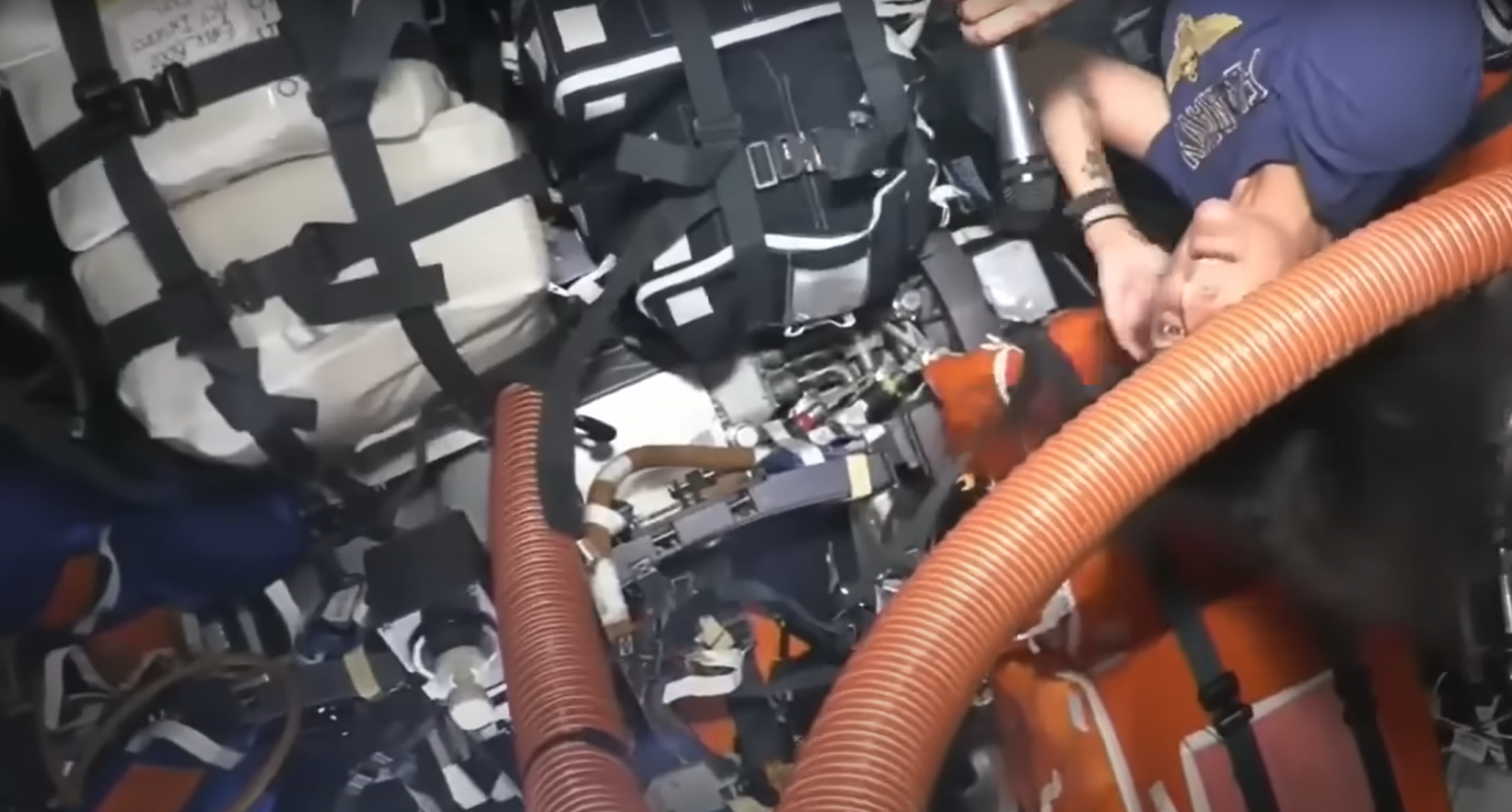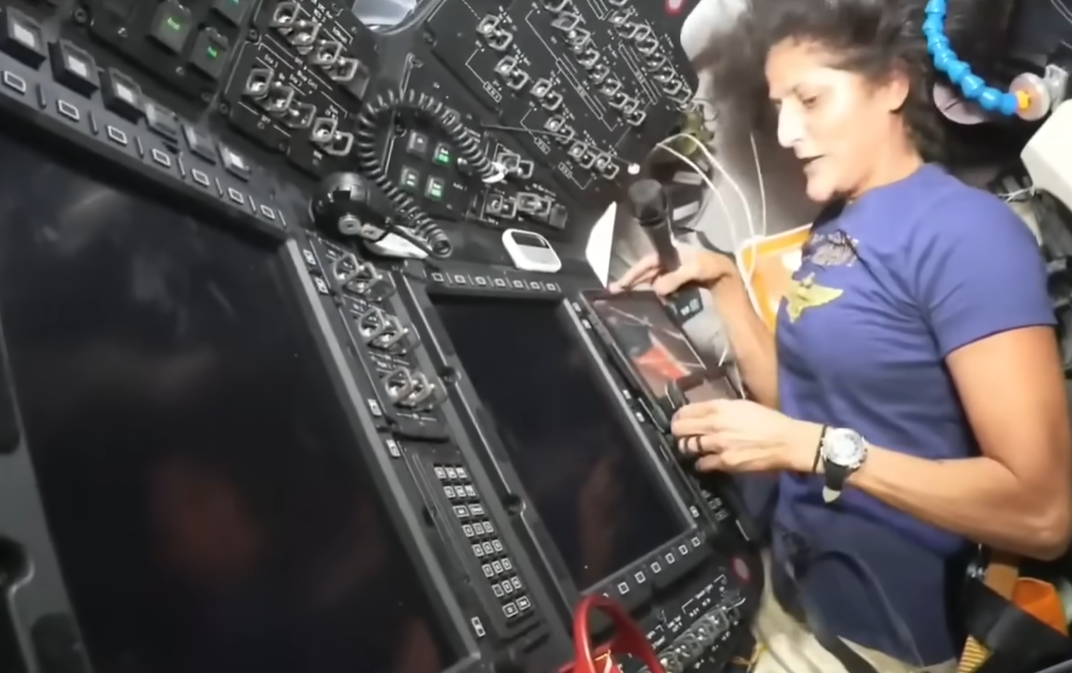Take a video tour of Boeing’s Starliner with its 2 NASA astronauts
"It's really awesome to showcase our new spacecraft, Starliner."
Two NASA astronauts have filmed a tour of Boeing's Starliner, taking the public around the spacecraft that delivered them to the International Space Station (ISS) on Friday (June 6).
Starliner docked with the ISS Friday at 1:34 p.m. EDT (1734 GMT), 26 hours after the capsule launched on its first-ever crewed flight. The crew are commander Butch Wilmore and pilot Suni Williams, the first two of dozens of astronauts expected to fly to the ISS aboard the Boeing spacecraft.
Wilmore and Williams will stay aboard the ISS until at least June 18, an extension of five or so days beyond what was originally expected. The extra time will allow engineers to perform more checkouts on Starliner and provide margin for an ISS spacewalk on June 13.
Related: Boeing's 1st Starliner astronaut mission extended through June 18
In the meantime, Wilmore and Williams treated us to a guided tour of the interior of Starliner.
Williams begins the tour on the ISS with Wilmore behind the camera, pointing to the Japanese Experiment Module (JEM), nicknamed Kibo, on the port side of the space station. She then indicates Europe's Columbus module on the ISS' starboard side before passing down the Pressurized Mating Adapter (PMA), which links spacecraft like Starliner to the ISS, moving to the docking adapter and finally into Starliner.

The first shot onboard the Boeing craft shows Williams upside down, indicating the two-person crew's ventilation system, which consists of several orange tubes. We then see the cramped-looking crew living area, which Wilmore assures us is actually quite spacious. Let's hope so, because Starliner will ferry four passengers to the ISS next rather than two.
Get the Space.com Newsletter
Breaking space news, the latest updates on rocket launches, skywatching events and more!
The tour then reveals the hatch of Starliner, as Wilmore drifts into the craft to sit in his commander's seat while Williams takes her pilot's chair.
This offers the bird's eye view that the crew had during their historic journey to the ISS. Williams also shows the controls that Wilmore used to manually fly Starliner during a series of pre-docking tests.

"Everything's been fantastic. The spacecraft has handled things remarkably well, much better than the simulator, and it's been just a positive event," Wilmore says in the video.
The NASA astronaut then indicates the safety equipment that would be used if the crew had to use the Starliner as a lifeboat in the event of an emergency situation, such as debris approaching the ISS.
Wilmore says he and Williams have already performed a "safe haven" practice event to test the procedure for taking shelter in Starliner. Also among the safety equipment are orange bags with kits that would be used in the event of a toxic chemical leak and respirator masks that would be worn if that situation were to arise.
Before leaving the Starliner craft, Wilmore pays tribute to his and William's fellow U.S. service members.
"In case you were wondering, yes, Suni and I are both Naval aviators, so we put on our Navy paraphernalia to show off and be proud of our service," Wilmore says in the video. "So, thanks to all of you out there serving right now throughout the world and protecting freedom."
Back on the ISS, the tour ends with a sight that will bring life on the space station down to Earth. Wilmore explains that, because it was Saturday, the ISS crew had the vacuum cleaner out cleaning! He then floats the microphone back to Williams, who signs off the tour.
"I'm just super happy to be here on the ISS with our international partners," she says. "It's really awesome to showcase our new spacecraft, Starliner. It is a pretty spectacular event to have humans orbiting the planet, and now we have a number of ways to get people here. Butch and I are so honored to be part of this crew."
Join our Space Forums to keep talking space on the latest missions, night sky and more! And if you have a news tip, correction or comment, let us know at: community@space.com.

Robert Lea is a science journalist in the U.K. whose articles have been published in Physics World, New Scientist, Astronomy Magazine, All About Space, Newsweek and ZME Science. He also writes about science communication for Elsevier and the European Journal of Physics. Rob holds a bachelor of science degree in physics and astronomy from the U.K.’s Open University. Follow him on Twitter @sciencef1rst.
-
Rob77 Big contrast to the Dragon capsule, understandably they are probably hauling a lot of cargo.Reply
I like that they have manual flight capability. Unsure if Dragon has this - or do they use the touch screen for manual flying?









